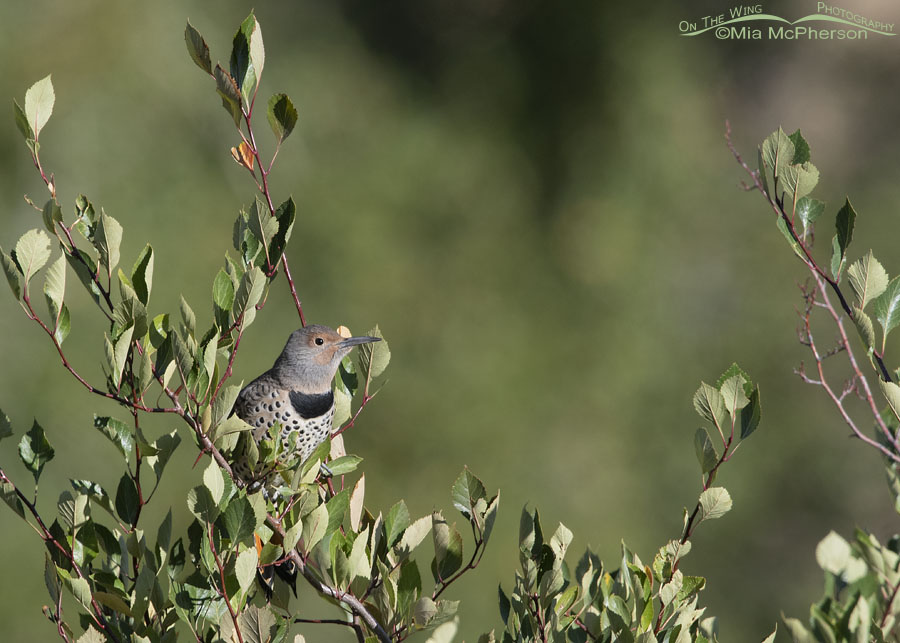 Female Northern Flicker foraging in hawthorns – Nikon D500, f7.1, 1/1000, ISO 640, Nikkor 500mm VR with 1.4x TC, natural light
Female Northern Flicker foraging in hawthorns – Nikon D500, f7.1, 1/1000, ISO 640, Nikkor 500mm VR with 1.4x TC, natural light
I know that many aspiring photographers dream of having a long lens when they are first becoming obsessed with photographing birds. I can say without hesitation that I drooled over having a 500mm or 600mm myself when I developed my passion for bird photography. I started out with a 70-300mm lens then an 80-400mm before I obtained a 200-400mm lens and eventually my 500mm lens. I wanted eye-popping, frame filling images of my avian subjects and that isn’t always easy to do with shorter focal length lenses. It can be frustrating to get those frame filling images of birds, especially smaller birds.
That noted, there is much to be said about taking photos where the avian subject is smaller in the frame. The primary reason is that more of the habitat where the bird lives in can be shown. A well composed, nicely lit, sharp photo of a bird small in the frame can also convey a strong story and be visually compelling.
Yes, this photo was taken with a 500mm lens. It also could have been taken by a person with a shorter focal length lens and strong stalking skills. Or a point and shoot camera with a bit of optical zoom.
This adult female Northern Flicker and a male were both foraging for hawthorn berries when I spotted them from across a creek high in the Wasatch Mountains. I knew that the flickers were too far away to take frame filling images of them so I decided to take photos of them where they were smaller in the frame. Of those images I liked this one the best. The flicker was sharp, I had wonderful eye contact with her, and the leaves of the hawthorn framed the bird nicely.
Even though the female Northern Flicker doesn’t occupy a large portion of this image my eyes are drawn to her again and again.
Life is good.
Mia
Click here to see more of my Northern Flicker photos plus facts and information about this species.


She’s a divine little creature. The amber leaf above her acts like an arrow pointing my eye back down to her lovely face.
I still want a 500mm!
Yet another delightful shot. I do love to see the habitat.
That said, it is the optical zoom of your eyes which so often blows me away. Unless they were very close I doubt I would even see many of the birds you feature. My loss.
I agree with Jorge on everything and including either a 500mm or 600mm prime that I know I won’t have the money for! Nothing wrong in dreaming even if it is during a pandemic!!
This post is very interesting because I can see myself in it. Like you, I also started with the smaller lenses and I realize that they have their advantages in terms of showing the environment in which the birds move. I still use them. However, although I now have a 200-500mm I still dream of a 500mm prime that I know now I will never have.
Thank you for the beautiful photo.